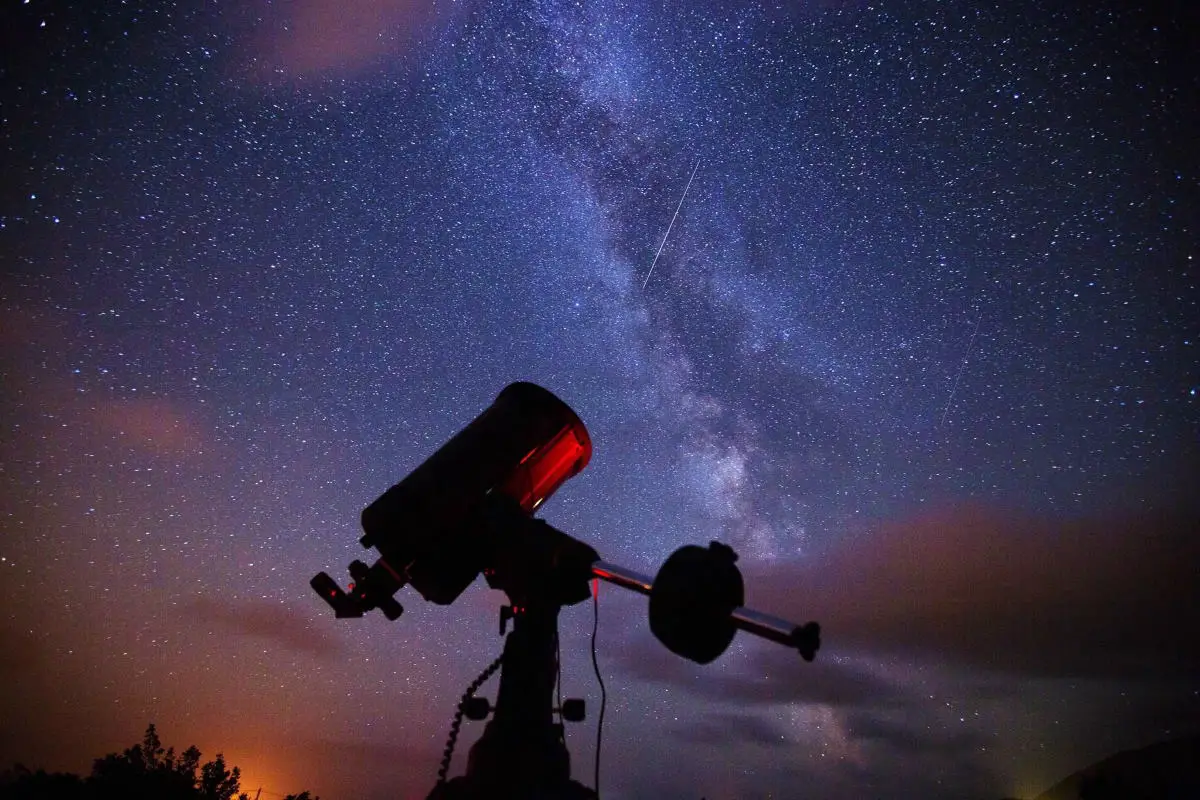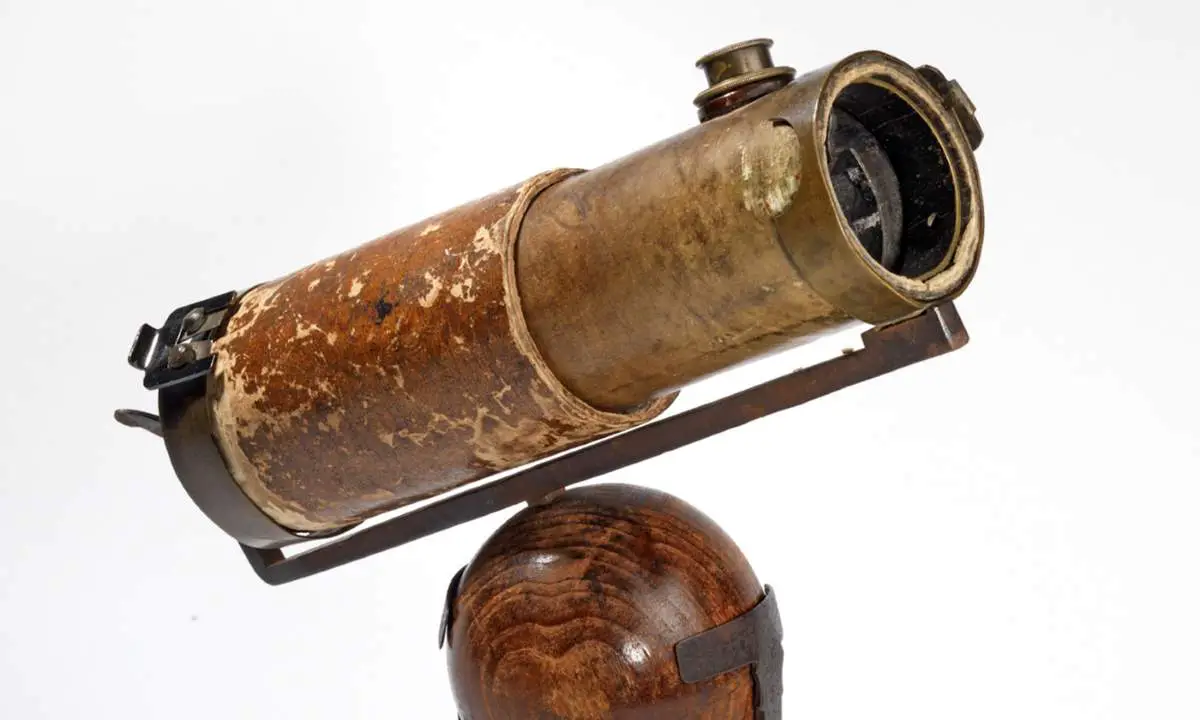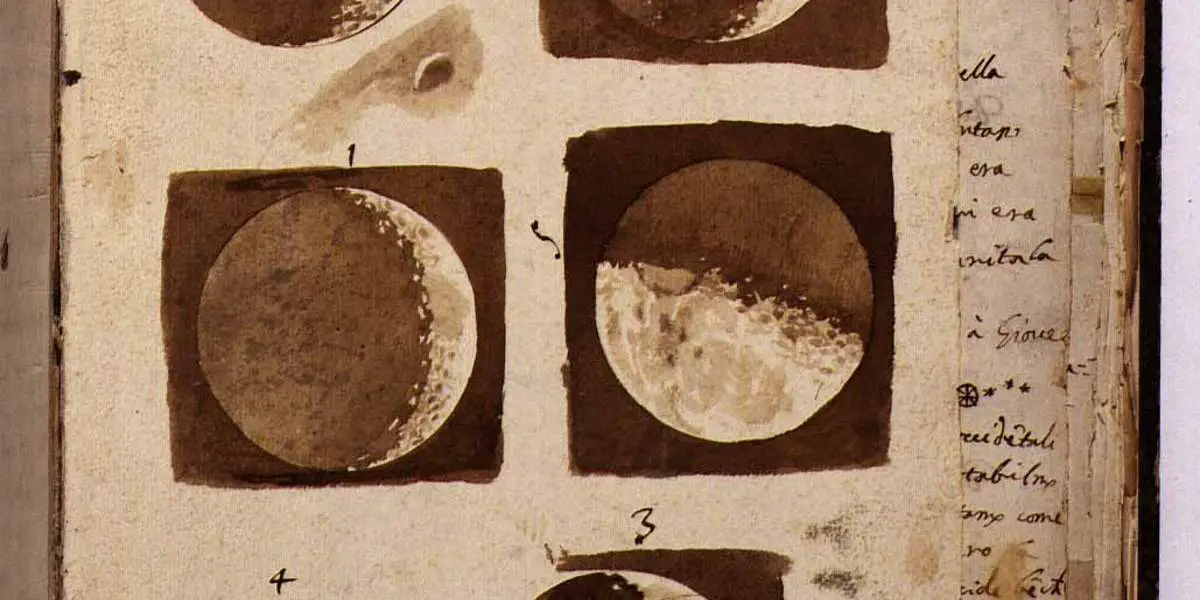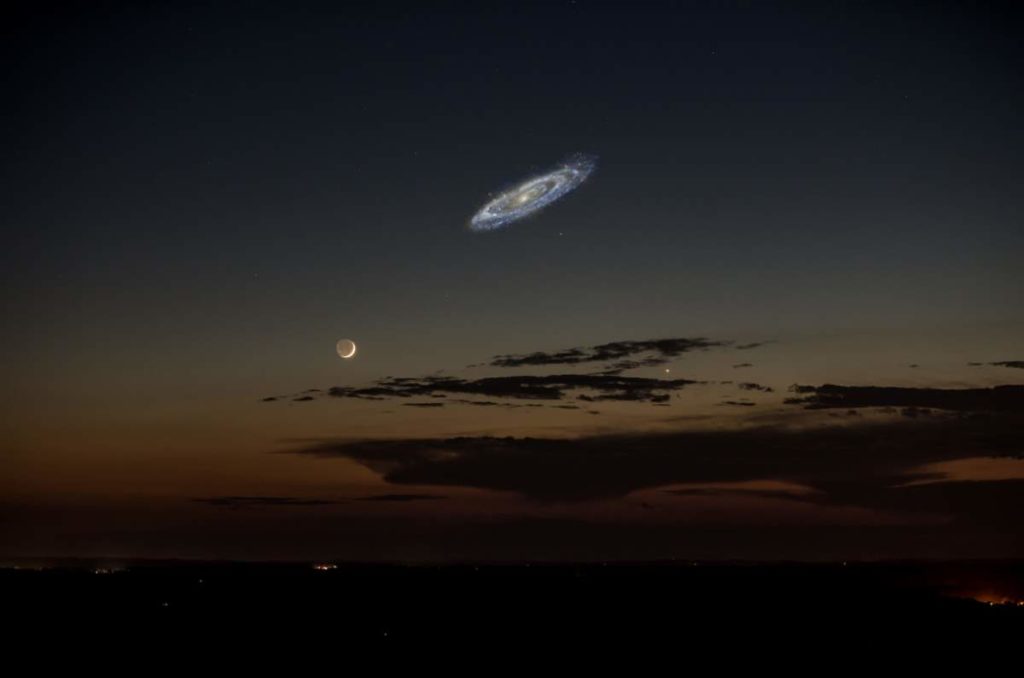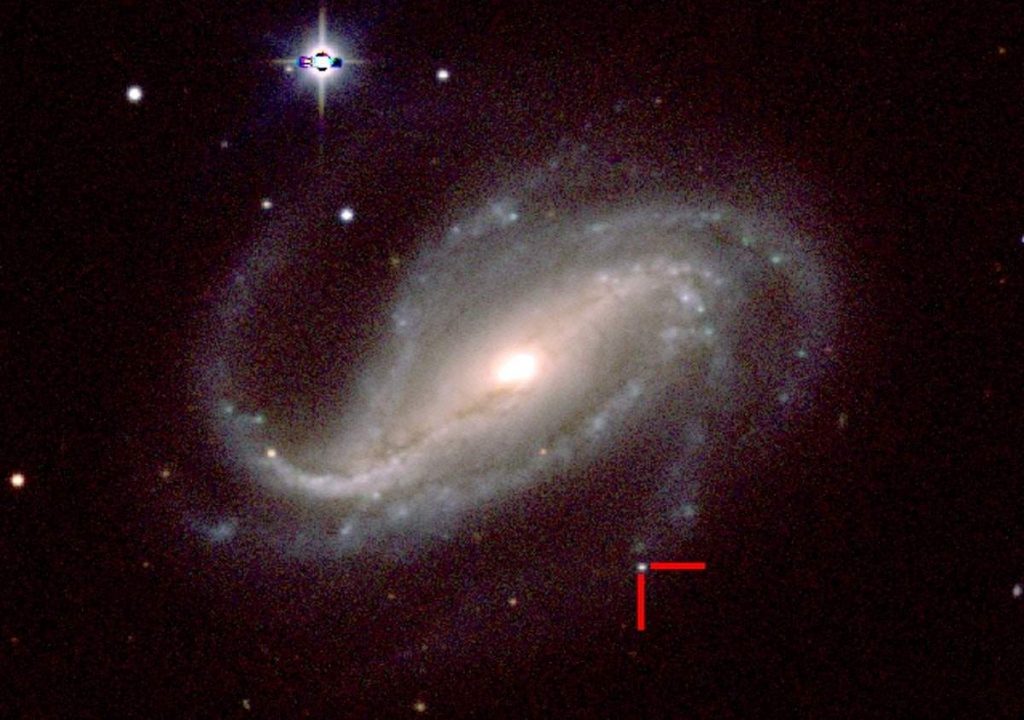You decided to buy your first telescope, but don’t know where to start? Here’s a simple guide for you.
Since prehistoric times, humans have been fascinated by the night sky. But, our relationship with it was forever changed when the Italian astronomer Galileo Galilei pointed his telescope to the night sky, discovering the four moons of Jupiter – Io, Europa, Ganymede, and Callisto in 1610.
In that same year, Galileo also discovered a strange oval surrounding Saturn, which later observations determined to be its rings. These discoveries changed how people understood the far reaches of our solar system.
Before buying your first telescope, there are some points to think about, like:
- Do you have enough free time to use it?
- What do you want to observe?
- What is your budget?
Buying your first telescope: a simple guide
First, a few quick tips (we will dive into the details later):
- Before purchasing anything, do proper research about the night sky. Good knowledge of the pattern of constellations, the brightest stars, and their names will greatly facilitate the process of searching for astronomical objects in the future when you purchase your first telescope.
- Starting with visual astronomy (simply observing the objects) before astrophotography is the best way to begin.
- Choosing a Dobsonian reflector as the first telescope is the most clever choice for many of us. With a Dobsonian reflector, you can maximize light-gathering power on a budget (more on this later).
- If all other characteristics are the same when choosing one of the two telescope models, you should always choose a telescope with a larger aperture.
- A too large and/or too heavy telescope will get used much less – they are usually called “hobby killers”.
- You can take photos of the Moon and planets system objects using your smartphone.
- Do not look at the Sun with your telescope under any circumstances – even if it’s overcast! In general, never directly look at the Sun without proper protection for your eyes.
Get to know the night sky

As explained above, it’s better to get to know the night sky before buying anything. Good knowledge of the pattern of constellations, the brightest stars, and their names will greatly facilitate the process of searching for astronomical objects in the future when you purchase your first telescope.
Now we’re lucky because we even don’t need to buy a star map anymore – there are many smartphone applications for this. Without them, the search for most objects in deep space can turn into real torture, and most likely will end in failure.
These applications will also provide you with detailed information about the most interesting celestial objects and phenomena – for example, planets, comets, eclipses, meteor showers – that can be observed in the near future.
Consider making some friends who have more experience than you
Consider finding experienced friends and like-minded people. Looking through a telescope in splendid isolation is certainly a fascinating and educational activity, but joint observations with the participation of more experienced sky lovers will allow you to master the skills of an astronomer-observer much faster.
Join a local astronomy club (if there’s any) even if you don’t have a telescope or binoculars. Communicate, regularly attend club observations, try to get to know “shortly” with telescopes of various models, find out their strengths and weaknesses, talk to their owners. In the future, this will greatly facilitate the process of choosing the first telescope.

Related: Why the night sky is dark?
Consider buying binoculars first before buying a telescope
Before spending money on a telescope, you may consider buying binoculars. You may be surprised, but even the most ordinary inexpensive 7x35mm binoculars, such as are usually taken with them to football or to the theater, are quite suitable for observing the night sky.
With binoculars, you can see the famous Andromeda Galaxy, the Pleiades, the Great Orion Nebula, and more. Yes, and do not forget about the Moon – many details of the lunar surface that are inaccessible to the naked eye are clearly visible through binoculars.
Having learned how to find celestial objects through binoculars, you are almost ready to buy your first telescope.
Buying your first telescope
And now it’s time to buy your first telescope. A Dobsonian reflector is often recommended as a great first telescope for amateur astronomers whose budget is tight.
Please note that the Dobsonian is not a brand – it’s the type of telescope. A Dobsonian telescope is an altazimuth-mounted Newtonian telescope design popularized by the amateur astronomer John Dobson (September 14, 1915 – January 15, 2014).
An altazimuth or alt-azimuth (or Altitude-Azimuthal) mount a simple two-axis mount for supporting and rotating an instrument about two perpendicular axes – one vertical and the other horizontal. Dobsonian telescopes are moved by hand to a target in the sky. They move in the up-and-down (altitude) and left-to-right (azimuthal) directions – hence the mount name.
The Newtonian telescope, also known as the Newtonian reflector is a type of reflecting telescope invented by the English scientist Sir Isaac Newton (1642-1727).
A Dobsonian telescope basically looks like this:
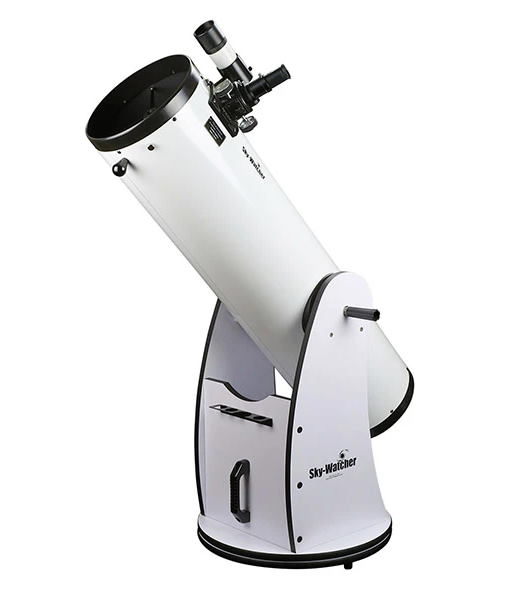
What you will see?
Now you bought your first telescope. What you will see?
First of all, do not rush. Having opened the coveted box at home, first of all carefully read the instructions. Start observing with the most basic, familiar celestial (or even terrestrial) objects. If any additional options and accessories are sold for your telescope, do not rush to purchase them all at once, you can always do it later.
Explore the telescope and its capabilities gradually, step by step, from observation to observation. And then for many years, it will become for you the best and most reliable companion for fascinating travel across the starry sky.
The main thing that an amateur astronomer who first goes out to observations should understand is that the sky always plays by its own rules.
Did you want to look at the meteor shower and didn’t see a single meteor? Did you want to see Venus in the rays of the morning dawn, and the horizon was covered with clouds? Looking for a faint object, but never found due to the haze in the upper atmosphere? Well, nothing can be done about it, we will have to wait for the next time.
Be patient and remember that regularity and perseverance are as important to the amateur astronomer as (and perhaps more) than a good telescope.
The second rule to keep in mind is that most objects available for observation through a telescope are at the limit of visibility. Astronomers sometimes spend long hours searching for a very faint or very small (and sometimes both together) object, and the results of the search can greatly disappoint the inexperienced observer. Just a small foggy speck, in which, over long hours, it is possible to see, at best, faint traces of the structure…
Alas, even the most expensive telescope you can buy will never be able to show those fantastic, colorful, full of fine details images that are familiar to us from popular science books, websites, or movies. Such images can be obtained only in professional observatories by photographing at ultra-long exposures: it is impossible to see such things “with just the eye”, even by looking through a good quality telescope. The biology of human vision and the eternally turbulent atmosphere of the Earth bring their severe limitations to observational astronomy.

However, don’t be discouraged. You may not be able to see into the depths of the universe as far as the Hubble Space Telescope can; nevertheless, the sky above us is full of delightfully beautiful and stunningly interesting objects that are quite accessible for observation with an inexpensive amateur telescope. Moreover, some objects are visible only at certain times of the year, others slowly, with a period of several years, change their appearance (for example, the planet Saturn), and others are completely unique so that they can be seen only once in a lifetime!
How does a telescope work?
Any telescope has two fairly simple functions:
- It collects light from distant celestial objects
- It magnifies the image of these objects.
There are many different designs of telescopes, but they all work on the same principle – a lens or mirror (or both together) collects light in such a way that the resulting image can be viewed through an eyepiece.
To the question – “which of the functions of the telescope is more important?” the answer must be clear: gathering light. The large magnification is nowhere near as important as is commonly thought. Judge for yourself – if we want to see a small object in a dark room, we need more light, not a magnifying glass, right?
You may be surprised, but many celestial objects practically do not need to be magnified! For example, the famous Andromeda Galaxy (galaxy M31) extends more than 3 degrees, that is, 6 times the diameter of the full moon. Do you need a strong magnification to see an object of this size? Naturally not. However, with the naked eye, we can only make out the small, bright core of this galaxy. To see the Andromeda Galaxy in its entirety, we need to collect as much light as possible, and we don’t need a large magnification.
Magnification becomes important when observing bright objects close to us, primarily the Moon and planets. However, it is not entirely reasonable self-limitation to engage only in the planets and the Moon and neglect the observations of deep space objects or comets.
When choosing your first telescope, never go after high magnification. Yes, in this case, celestial objects look much larger, but at the same time, things that should not be magnified at all become much more noticeable – for example, vibrations of a telescope tube or distortions caused by atmospheric turbulence.
It is very important for a novice astronomer-observer to learn how to select the optimal magnification for each celestial object, that is, the magnification at which one can see the maximum amount of detail with the minimum loss of image quality.
Aperture is important
Almost all optical (limiting magnification, resolving power) and mechanical (dimensions, weight) of any telescope directly depend on its aperture, i.e. the diameter of the main mirror or lens. In this case, for optical parameters, the dependence is positive: the larger the aperture, the more faint objects can be viewed and the greater the magnification can be applied. Therefore, if all other characteristics are the same when choosing one of the two telescope models, you should always choose a telescope with a larger aperture.
However, an increase in the aperture entails a significant increase in the size and weight of the telescope. Carrying 40 or even 60 kilograms back and forth is a tedious and exhausting task, and for many, it is completely overwhelming; the acquisition of such a powerful device (a paradox!) can once and for all kill a person’s desire to engage in practical astronomy.
In addition, storing a large telescope will require a lot of space in an apartment (and not in someone else’s, but in yours), and its price can be very painful for a single-family budget. Therefore, it is best for the novice observer to choose a model with an aperture of 3 to 6 inches (70 to 150 mm).
Aiming and Control
After deciding on the aperture issue, you should decide on the type of telescope mount. In simple terms, a telescope mount is the same as a tripod for a camera or camcorder, only much more important. In the end, the camera can be used without a tripod, but observing in a more or less serious telescope without a mount is absolutely stupid.
Try to accurately direct at the object and hold in this position for at least 10 minutes – for example, a cylinder a meter (3 feet) long, 10 centimeters (4 in) in diameter, and weighing 3 kilograms (6.6 lbs), and this is still a very, very small telescope!
All existing mounts are subdivided into alt-azimuth (explained above) and equatorial. The alt-azimuth mount allows you to rotate the telescope around two mutually perpendicular axes – vertical (azimuth) and horizontal (zenith). Since the starry sky slowly revolves around the Earth, in order to track an object, the observer must constantly adjust the position of the tube on both axes using micrometer screws or, in the case of Dobsonian telescopes, manually.
The equatorial mount also has two mutually perpendicular axes, but they are tilted so that one of them (the clock, or polar axis) is directed to the celestial pole of the world. This allows you to track objects by slowly rotating the telescope tube around one axis only.
Often, these mounts are equipped with a clock drive or an electric motor that automatically turns the pipe at the desired speed. Thus, the celestial object will be constantly in the field of view of the telescope, due to which the observation process becomes more comfortable. Moreover, when using a motorized equatorial mount, it is very convenient to carry out collective observations, since the selected object will not “go away” when changing the observer at the eyepiece.
The most modern mounts are motorized alt-azimuths or equatorials with a computerized guidance system, the so-called GoTo. They automatically aim at an object selected by the user from the database and then carry out continuous tracking at a given speed (stellar, lunar, or solar).
Incidentally, such miracles of technology are not so expensive – if you wish, you can find a computer-controlled mount for sale for less than $500. The disadvantages of such mounts include low targeting accuracy and increased “appetite” – you will need a lot of batteries for autonomous observations.
Regardless of the type of mount, it must be strong and stable. The best optics in the world will not show even 10% of their capabilities if they are installed on an unbalanced or loose mount, which begins to shake with a slight breeze or accidental touch of the observer.
For more or less comfortable observation, the mount should be at least as heavy as the telescope tube; it is generally desirable (especially for astrophotography) that the weight of the mount be several times the weight of the tube.
Telescope Types
There are three types of optical telescopes:
- Refractors (Refracting telescopes or lens telescopes)
- Reflectors (Reflecting telescopes or mirror telescopes)
- Catadioptrics (mirror-lens systems combined)
Refractors
A refractor uses a lens as its objective to form an image. Although large refracting telescopes were very popular in the second half of the 19th century, for most research purposes, the refracting telescope has been superseded by the reflecting telescope, which allows larger apertures.
A refractor is exactly what most people imagine when they hear the word “telescope”, ie. a long tube with a lens objective at one end and an eyepiece at the other.
Reflectors
Invented by Sir Isaac Newton in the 17th century, reflectors or mirror telescopes use a single or a combination of curved mirrors that reflect light and form an image. The design was an alternative to the refracting telescope which, at that time, was a design that suffered from severe chromatic aberration (also called chromatic distortion, which manifests itself as “fringes” of color along boundaries that separate dark and bright parts of the image).
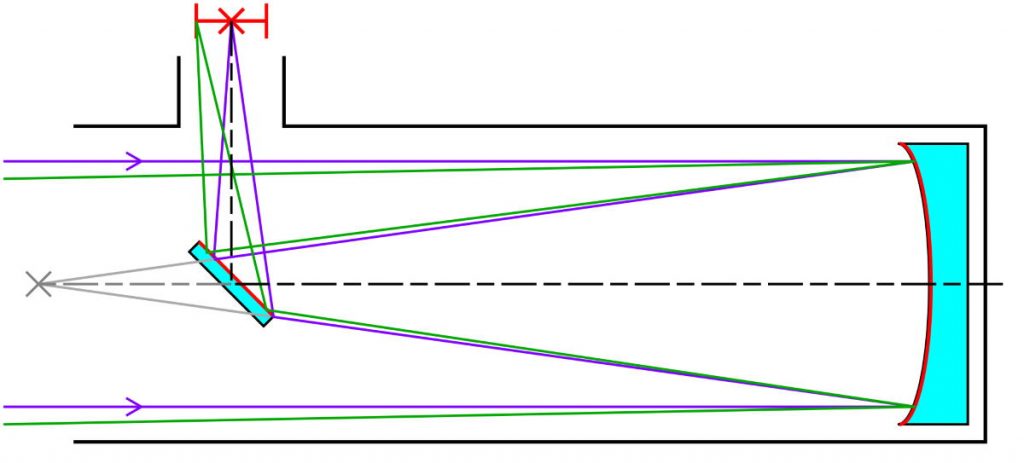
Mirrors are also easier to make than lenses, so within any particular price, range reflectors tend to be larger.
Catadioptrics
A catadioptric optical system is one where refraction and reflection are combined in an optical system.
Which telescope type is better?
Even on a budget of less than $500, many telescopes of all three types can be found in stores.
Which type is better? Perhaps the answer will surprise you a little: none!
The point is that there are no ideal telescope designs. Each of them has its own strengths and weaknesses. There are thousands of different objects in the sky, and no telescope can show us all of them equally well.
For example, refractors are great when observing bright objects such as the moon and planets at high magnifications. However, they are much less suitable for finding faint nebulae and galaxies.
Large aperture reflectors, on the other hand, collect a lot of light and do an excellent job with distant hazy objects far beyond the solar system.
Are you fascinated by the planets of the solar system? Do you dream of seeing the colorful pattern of the rings of Saturn, or the incessant dance of Jupiter’s moons, dust storms of Mars, covering half of the planet at once, or the mountains and valleys of the Moon? Then the refractor telescope should be your choice.
Do you want to see with your own eyes the light that has come down to us from the farthest corners of our universe? In this case, a large-aperture reflector telescope will be the optimal optical instrument.
Do you like to take long walks with a telescope and look for observation sites free from city light? Do you need a compact universal device that you can easily take with you on vacation, fishing, or to the country? Without a doubt, the best choice, in this case, will be a mirror-lens telescope.
The lists below summarizes which objects (and with what quality) can be seen with a telescope of one type or another if you stick to the price range under $500.
- Telescope type: 60-70 mm refractor with 25-120x magnification (objects in the solar system require a magnification of at least 60x)
- Solar System objects: Venus, lunar craters more than 5 miles (8 km) in diameter, several cloud belts on Jupiter, and Jupiter’s 4 Galilean moons, Saturn’s rings (with a Cassini slit under extremely good observation conditions)
- Stars: Binary stars with component distances of no more than 2 arcseconds under good observation conditions, faint stars up to 11.5 apparent visual magnitudes.
- Deep space objects: Large globular clusters, some bright nebulae, most Messier objects with few details.
- Telescope type: 80-90 mm refractor, 100-mm reflector or 90-mm mirror-lens telescope with 16-250x magnification
- Solar System objects: Phases of Mercury, lunar craters more than 3 (5 km) miles in diameter, Mars polar caps and large dark surface features, additional cloud belts on Jupiter; Cassini slit in the ring of Saturn + 4 or 5 satellites. Uranus and Neptune are very small disks.
- Stars: Binary stars with component distances of no more than 1.5 arc seconds under good observation conditions, faint stars up to 12 apparent visual magnitudes.
- Deep space objects: Many globular clusters; gas and planetary nebulae, galaxies; all objects in the Messier catalog and the brightest objects in the NGC catalog under good observation conditions. Some nebulae show traces of internal structure.
- Telescope type: 150 mm reflector with a magnification of 30-300x
- Solar System objects: Details of the lunar surface more than 2 miles (3.2 km) across; a more detailed view of the details of the disk of Mars; cloud belt structures on Jupiter under good observation conditions; weak cloud belts on Saturn; faint comets and bright asteroids.
- Stars: Binary stars with component distances of no more than 1 arc second under good observation conditions; faint stars up to 13 apparent visual magnitudes.
- Deep space objects: Hundreds of globular clusters, nebulae, and galaxies (some galaxies show traces of a spiral structure); the structure of globular clusters and some nebulae are visible.
- Telescope type: 200 mm reflector with a magnification of 50-400x
- Solar System objects: Details of the surface of the moon more than 1 mile (1.6 km) across; large clouds and dust storms on Mars; 6 or 7 satellites of Saturn; Galilean satellites of Jupiter in the form of disks at high magnifications; faint asteroids.
- Stars: Binary stars with component distances less than 1 arcsec under good observing conditions; faint stars up to apparent visual magnitudes.
- Deep space objects: Some globular clusters resolve all the way to the core; under good observation conditions, galaxies and nebulae show numerous details of their internal structure.
Pros and cons of refractors
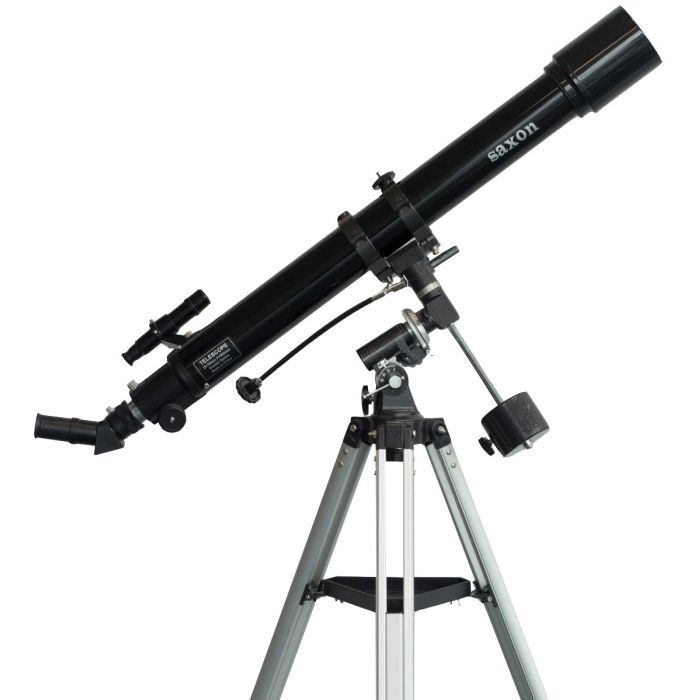
Pros
- The main advantage of the refractor is the absence of any obstacles in the path of the light flux from the lens to the observer’s eye. For this reason, the image in refractors has high contrast, much better than that of other types of telescopes.
- Refractors also require much less maintenance, in particular alignment (or collimation, as the optical axis alignment procedure is called).
- They are more tolerant of temperature changes, therefore, when transferred, for example, from indoors to outdoors, they require less time for temperature stabilization than reflectors.
- Thanks to its high contrast, the refractor provides the clearest and most detailed image of the moon and planets. This is especially true when observing under not the best conditions, when in a telescope with a large aperture the image will be blurred due to atmospheric turbulence. The image in a small refractor will suffer much less from it. Moreover, since the Moon and planets are brightly illuminated by the Sun, when observing these objects, a large magnification is more important than collecting light. In this case, the relatively small aperture of the refractors is an advantage, because the illumination from the bright surface of the planet will not wash out the weaker details.
Cons
- With the exception of apochromatic telescopes (which are very expensive), all refractors suffer from chromatic aberration. This optical defect produces faint violet edging of bright stars, planets, and the moon. To reduce this effect during observations, special filters are used.
- Another significant drawback is the price. Compared to reflectors, when the aperture grows from 100 mm and more, refractors grow very quickly in weight and price.
These shortcomings aside, a good refractor is a terrific instrument for an amateur astronomer. Even when observing faint nebulae, the high contrast of the image in the refractor can more than compensate for the lack of aperture (in comparison, for example, with a reflector from the same price category).
Pros and cons of reflectors
Pros
- Price. The Newton Reflector offers more performance for every dollar invested than any other type of telescope. The reason? To manufacture a reflector, it is required to polish only one surface of complex curvature with an accuracy of a millionth of a centimeter. In comparison, making a refractor lens requires polishing as many as four such surfaces. The optical scheme with one parabolic and one flat mirror is the cheapest of all possible, respectively – it has the lowest cost for each centimeter of aperture. Thus, for the same money, the reflector will have the largest aperture of all other telescope designs. And, as we have said repeatedly, the higher the aperture, the higher the performance of the device.
- The large reflector aperture produces bright images of deep-sky objects too faint for a small refractor. At the same time, the resolving power of a reflector with a large aperture also far exceeds the capabilities of small telescopes, especially under good observation conditions (that is, away from the urban illumination). To observe deep space objects, an extremely profitable option from a financial point of view is the purchase of a reflector on a Dobson mount. The combination of a large-diameter primary mirror and an inexpensive wood-made altazimuth mount ushered in a whole new era in amateur astronomy. Of course, among amateur telescopes, Dobson reflectors are the record holders in the aperture.
Cons
- A reflector with a large aperture is a fairly large and massive device. When choosing a reflector, remember that rolling a 40-kilogram (88 lbs) structure with a one and a half meter long (5 feet) pipe is not an easy task.
- Another disadvantage of reflectors is the scattering of light by the secondary mirror. This reduces the contrast of the image, especially when observing the Moon and planets, therefore, in terms of small details, reflectors often lose to refractors.
- Due to the curvature of the main mirror, all reflectors, without exception, have a coma – an optical defect (aberration), in which the stars along the edges of the field of view stretch into more or less pronounced “lines”. Nevertheless, this issue practically does not harm visual observations, since the object of interest to the astronomer is usually located in the center of the field of view, where the image is not distorted.
- Reflectors, especially when the telescope is frequently transported, require periodic alignment, i.e. alignment of the position of the mirrors (however, with proper skill, this procedure will take you no more than five minutes), and the open design of the pipe leads to the ingress of dust on the main mirror, and therefore requires periodic cleaning.
Nevertheless, despite all of the above disadvantages, the Newtonian reflector is the best choice for serious visual observations of faint galaxies and nebulae, and more than an adequate choice for observing the moon and planets. For more than 300 years, reflector telescopes have been the bestseller for amateur astronomers – and deservedly so.
Pros and cons of mirror lens systems (Catadioptrics)
Pros
- The sophisticated combination of special lenses and mirrors literally folds the long telescope tube into a compact and transportable design. If you like “astronomical tourism”, or if you do not have a place in your apartment to store a large-sized device, a catadioptric telescope will be the best option. Such a telescope looks very similar to a refractor – a lens in the front and an eyepiece in the back, however, its tube is almost three times shorter than a refractor tube of the same aperture. This is the only type of telescope that can be easily stowed in a regular sports bag along with all the accessories.
- Image quality. They are virtually free of both the coma characteristic of reflectors and the chromatic aberration inherent in refractors. Images of stars across the entire field of view of a mirror-lens telescope will be absolutely clear, with no extrusion or color halo. In addition, such an optical system does not require periodic adjustment, and the closed tube design protects the main mirror from dust.
Cons
- The scattering of light on the secondary mirror leads to the fact that the image contrast is lower than that of refractors.
- Price. The high manufacturing cost of large-diameter corrective lenses makes mirror-lens telescopes much more expensive than reflectors with the same aperture.
A few final tips
- Don’t overpay for size. The weight of the telescope should be such that you can independently carry it out into the yard or onto the balcony.
- If you plan to transport the telescope in a car, make sure that the tube is large enough to fit in the cabin or trunk. Otherwise, you run the risk of quickly becoming convinced that, in addition to the telescope, you urgently need a small truck.
- Measure your astronomical ambitions with the size of the telescope and the distance to the nearest observation site. In the center of a polluted metropolis, a 300-mm telescope will be completely useless, and traveling out of town with a half-meter optical tube weighing 50 kg (110 lbs) is not an exercise for the faint of heart.
- Try not to spend the entire planned budget on the telescope. Buying eyepieces, filters, and other additional equipment (especially for photography) is, to put it mildly, not the cheapest process.
- Observe as often as possible. Weather permitting, try to make observations every evening for at least one hour. It won’t take much time from your favorite TV series or the national football championship.
- The ability to see needs training. Observe the same objects regularly. Each time you will notice more and more new details.
- From time to time, there are reports in the press about comets, new stars, or even supernovae discovered by amateur astronomers. Develop the skills of an observer, carefully memorize the relative position of celestial objects in one or another part of the sky – and, quite possibly, one fine night you can be lucky too!
Sources
- “The best gift in the galaxy: an astronomer’s guide to buying a home telescope” on The Conversation
- “How to choose your first telescope” on the Sky & Telescope website
- “Hobby killers: what telescopes not to buy” on the Sky & Telescope website
- The ‘Great’ Conjunction of Jupiter and Saturn on the NASA website
- Dobsonian telescope on Wikipedia
- Refracting telescope on Wikipedia
- Astrodummies (archive)
- Cover image: Reddit user bubbleweed
- Space Shuttle Endeavour’s Touchdown Meets Columbia’s Salute [An amazing photo from the past] - February 29, 2024
- Moon Landings: All-Time List [1966-2024] - February 23, 2024
- From Orbit to Ordinary: 10 Earthly Applications of Space Technology - January 23, 2024
